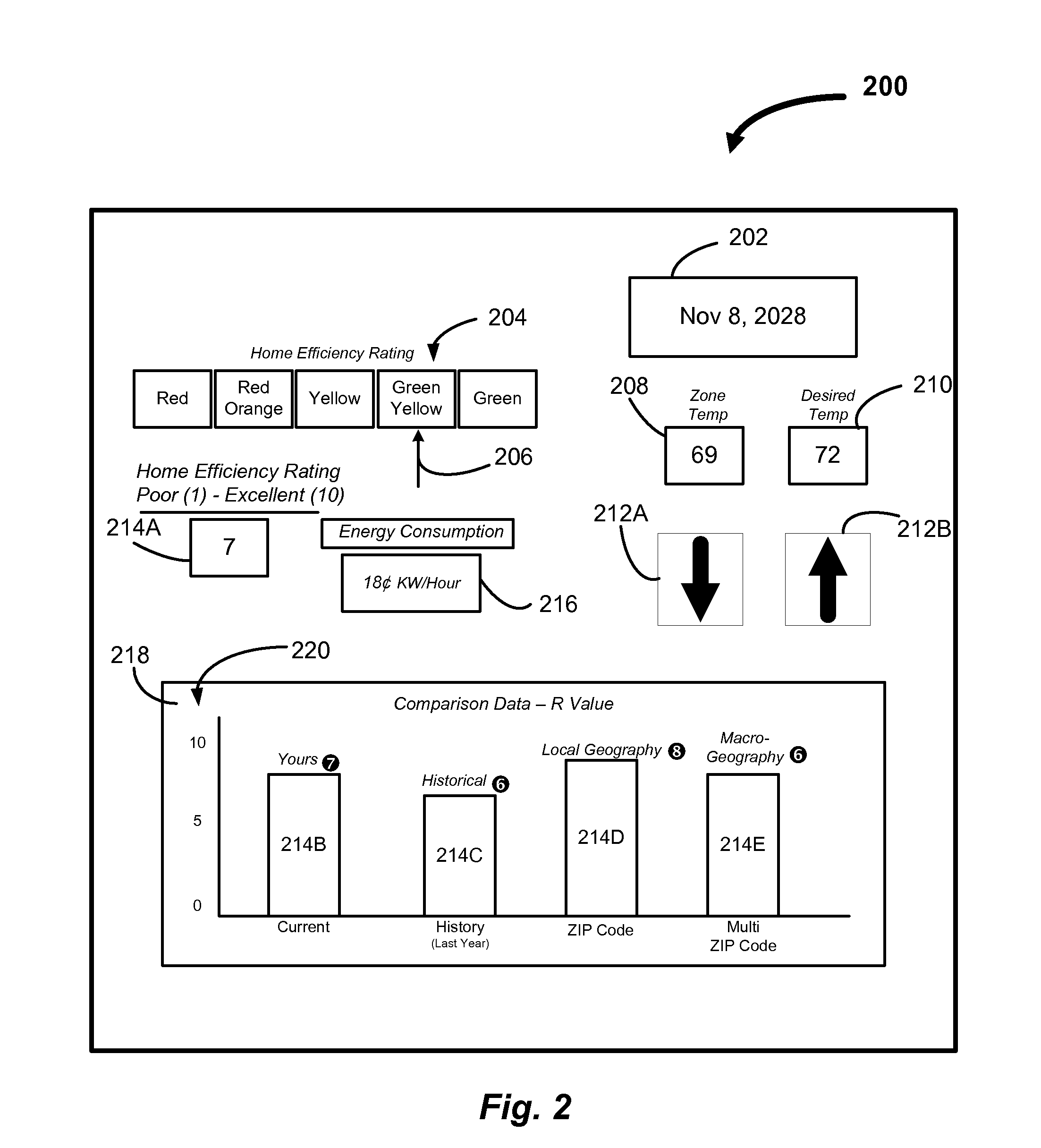Method and system for calculating energy metrics of a building and one or more zones within the building
a technology for building energy metrics and building zones, applied in lighting and heating apparatus, heating types, instruments, etc., can solve the problems of building materials deteriorating rapidly, corresponding building materials which form the respective building, and certain insulation and seals around windows of the building deteriorating rapidly, so as to achieve easy visual presentation and understand the
- Summary
- Abstract
- Description
- Claims
- Application Information
AI Technical Summary
Benefits of technology
Problems solved by technology
Method used
Image
Examples
Embodiment Construction
[0027]A method and system can provide building energy performance metrics that can help identify specific zones within a building which may have energy efficiency problems. The method and system can collect data from: indoor temperature sensors and humidity sensors present in each zone of a building; one or more temperature sensors and humidity sensors present outside of the building; one or more utility meters; and one or more HVAC devices. This data from the sensors can be aggregated and formed into a first profile. The energy efficiency calculation system can analyze the first profile to provide various energy performance metrics which can include, but are not limited to, energy efficiency ratios for air conditioners, the R-value or thermal resistance of the building, an amount of heat loss for the building, energy consumption by the building, current HVAC performance parameters, and utility usage comparisons.
[0028]Turning now to the drawings in which like reference numerals refe...
PUM
 Login to View More
Login to View More Abstract
Description
Claims
Application Information
 Login to View More
Login to View More - R&D
- Intellectual Property
- Life Sciences
- Materials
- Tech Scout
- Unparalleled Data Quality
- Higher Quality Content
- 60% Fewer Hallucinations
Browse by: Latest US Patents, China's latest patents, Technical Efficacy Thesaurus, Application Domain, Technology Topic, Popular Technical Reports.
© 2025 PatSnap. All rights reserved.Legal|Privacy policy|Modern Slavery Act Transparency Statement|Sitemap|About US| Contact US: help@patsnap.com



